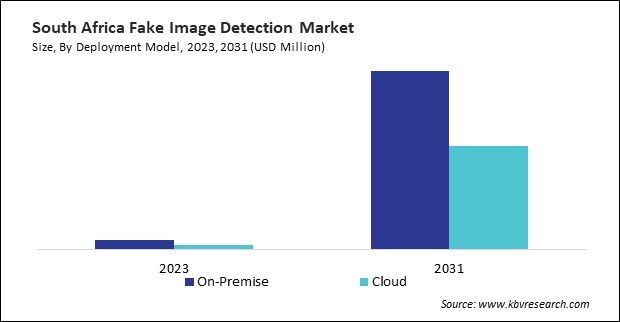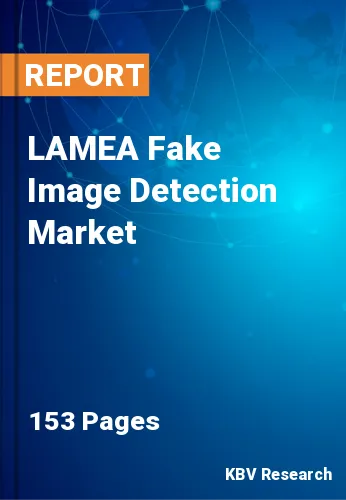The Latin America, Middle East and Africa Fake Image Detection Market would witness market growth of 43.7% CAGR during the forecast period (2024-2031).
The Brazil market dominated the LAMEA Fake Image Detection Market by Country in 2023, and would continue to be a dominant market till 2031; thereby, achieving a market value of $166.1 million by 2031. The Argentina market is exhibiting a CAGR of 44.5% during (2024 - 2031). Additionally, The UAE market would experience a CAGR of 43.2% during (2024 - 2031).

The adoption of fake image detection technologies has been on the rise across various industries and sectors. For example, with the proliferation of fake news and misinformation across digital platforms, there has been a heightened awareness of the need to combat the spread of fake images. Organizations and individuals alike recognize the importance of verifying the authenticity of visual content to prevent the dissemination of false information. Moreover, advances in artificial intelligence (AI), machine learning (ML), and computer vision technologies have significantly improved the capabilities of fake image detection algorithms. These advancements enable more accurate and efficient detection of fake images, driving adoption among organizations seeking reliable solutions to combat image manipulation.
Ensuring the authenticity of visual content is also crucial for maintaining consumer trust and safety in various sectors, including e-commerce, healthcare, and digital advertising. The technologies help organizations build trust with consumers by providing accurate and reliable information, enhancing consumer confidence and loyalty.
With the expansion of the telecom sector in the UAE, there is a significant increase in digital communication channels, including messaging apps, social media platforms, and online forums. The proliferation of digital communication channels creates opportunities to disseminate fake images and visual misinformation. The technology becomes essential for telecom companies to combat the spread of fake images across their platforms, ensuring the integrity and trustworthiness of digital communication channels. Hence, the proliferation of the digital healthcare sector and the increasing telecom industry in the region promote market growth.
Free Valuable Insights: The Worldwide Fake Image Detection Market is Projected to reach USD 8.2 Billion by 2031, at a CAGR of 40.3%
Based on Offering, the market is segmented into Solutions and Services. Based on Application, the market is segmented into Social Media & Content Moderation, Digital Forensics, Fraud Detection, Healthcare & Medical Imaging, and Recruitment. Based on Enterprise Size, the market is segmented into Large Enterprises and SMEs. Based on Deployment Mode, the market is segmented into On-Premise and Cloud. Based on Target User, the market is segmented into Professional, Enterprise Grade and Individual. Based on Technology, the market is segmented into Machine Learning & Deep Learning and Image Forensics. Based on Vertical, the market is segmented into Government, BFSI, Real Estate, Healthcare & Lifesciences, Telecom, Media & Entertainment and Others. Based on countries, the market is segmented into Brazil, Argentina, UAE, Saudi Arabia, South Africa, Nigeria, and Rest of LAMEA.
By Offering
By Application
By Enterprise Size
By Deployment Mode
By Target User
By Technology
By Vertical
By Country
Our team of dedicated experts can provide you with attractive expansion opportunities for your business.

